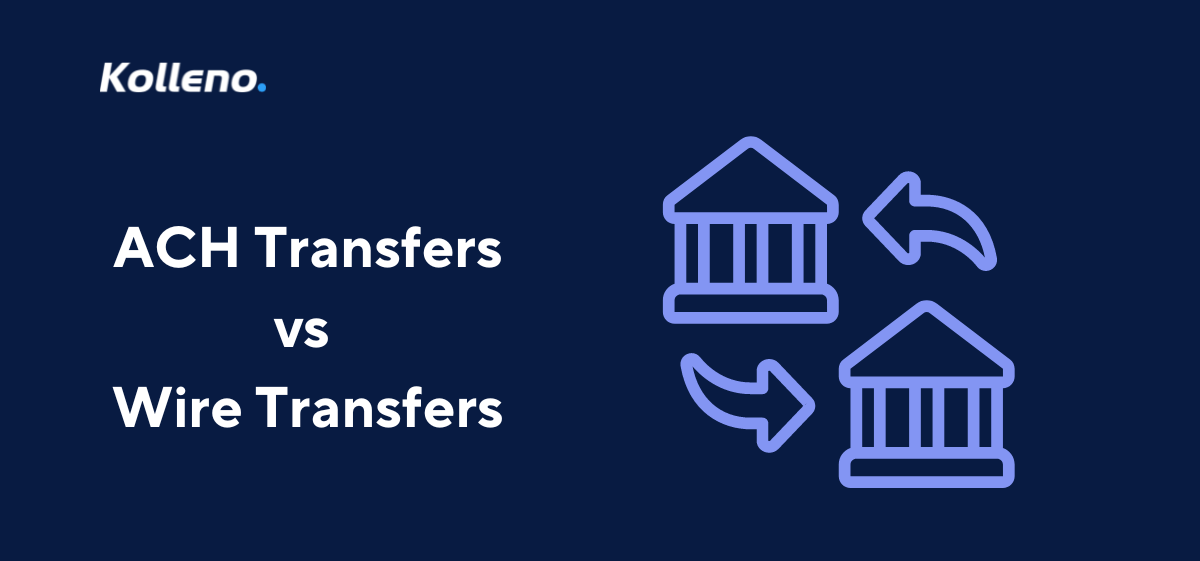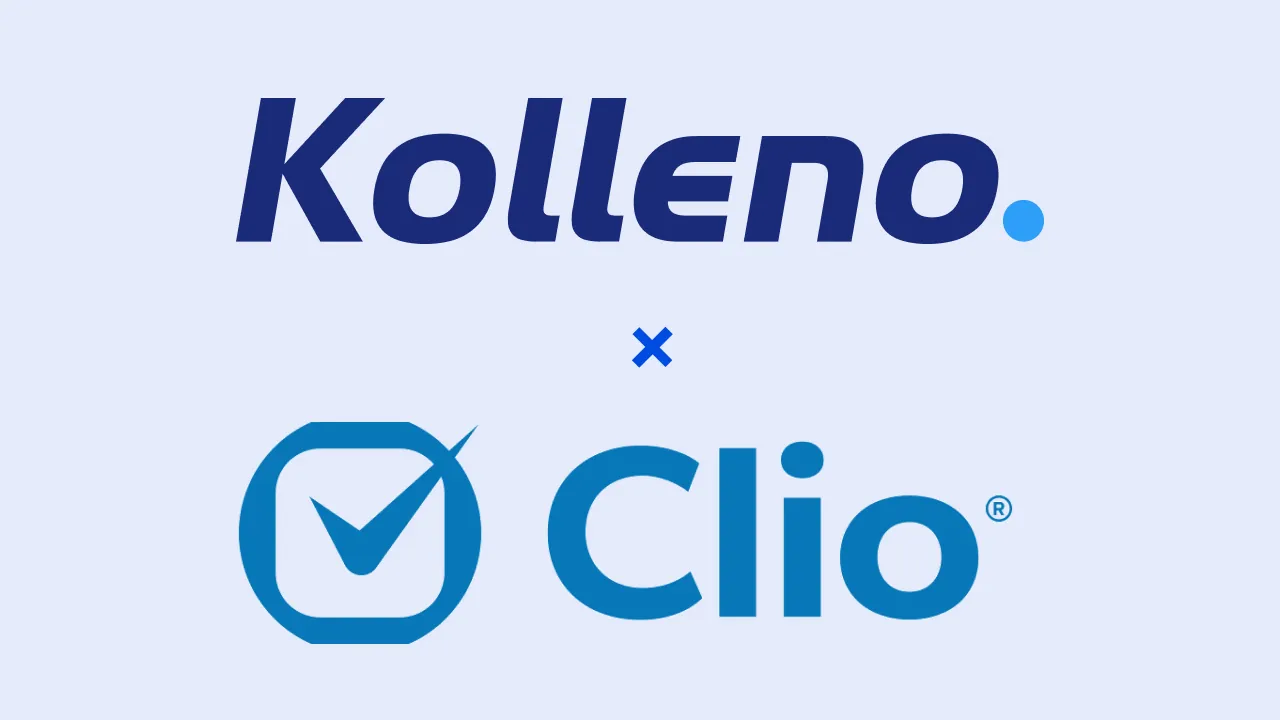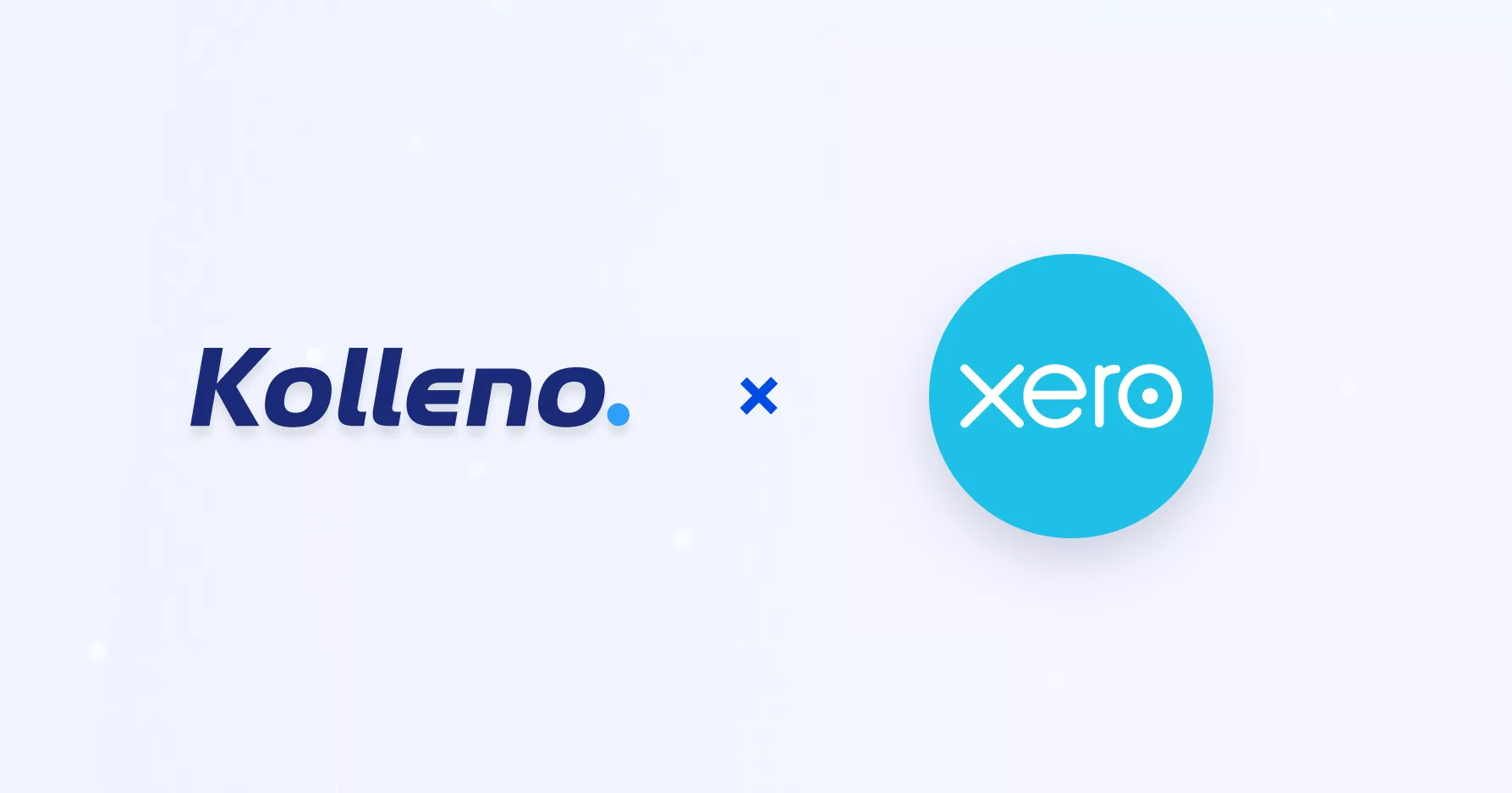Key Points
Automated clearing house (ACH) transfers as well as wire transfers are payment methods that have significantly simplified electronic billing and the transferring of money in our world today.
Choosing between utilising ACH or a wire transfer will largely depend on the purpose behind the delivery or receipt of money as well as the degree of urgency for the transaction to be completed.
In the majority of cases, wire transfers usually process at a much faster speed compared to ACH transfers. Therefore, wire transfers would be the optimal choice for customers looking to make cross-border payments and/or urgent transactions.
Meanwhile, it is pretty common for banks to charge a fee for the sending or receiving of money via wire transfers, whereas ACH transfers are usually free-of-charge.
As the world becomes increasingly connected through technology, it comes as no surprise that electronic payments are increasing in popularity. In particular, electronic payment options are typically cheaper, much more straightforward, and simple to execute whenever customers hope to settle their bills or transfer money. On that note, two noteworthy methods for individuals to transfer funds directly from a bank account are namely: automated clearing house (ACH) transfers alongside wire transfers.
Nonetheless, it is vital to bear in mind that while both fund transfer options help to make electronic transactions easier, ACH and wire transfers have their unique differences, primarily when the topic revolves around pricing and speed.
With that, Kolleno is a smart credit control platform, Kolleno, providing various digital tools, such as its simplified payment process, analytics tools, and invoice management features, to help companies automate their day-to-day tasks.
Introducing: Electronic Fund Transfer
Electronic fund transfer is a generic term used to describe the digital movement of money between bank accounts. It covers every type of digital payment approach, ranging from wire transfers to ACH transfers to credit card processing options. In essence, bank employees are not required to actively manage electronic fund transfers as these processes can be initiated and processed through digital channels via supporting programmes and algorithms.
Meanwhile, two key stakeholders are participating in the electronic fund transfer process, namely the sender of the money and its intended recipient. In specific, the sender initiates the procedure by submitting a money transfer request via an internet-based payment terminal. The sender’s bank, in turn, will transfer the request to the recipient’s bank either directly or through clearing houses, in which the account details and payment collection protocol will be authenticated and executed by the recipient’s bank.
To help businesses with digital payments, the Kolleno platform has been crafted to manage the company’s credit control and accounts receivables so that the management team can focus entirely on what they do best – scaling the business to the next level.
An Overview of ACH Transfers
What Is an ACH Transfer?
Simply put, an ACH transaction usually involves the sending of money between financial institutions like banks and credit unions via an electronic network. As a matter of fact, around 7.5 billion ACH transfers were processed during the second financial quarter of 2022, which is equivalent to a total of US$19.6 trillion!
In particular, such transfers may be performed for various purposes, including the following:
• Non-recurring payment of bills
• Cross-border payments
• Direct deposit of tax reimbursement and/or government benefits
• Direct deposit of paychecks
• Payment for healthcare claims
• Periodic payments (e.g., automated payment of bills)
• Business-to-business (B2B) payments
• Peer-to-peer (P2P) payments
Given the diverse range of applications that are made available by ACH transfers, the use of ACH transfers subsequently rose by 8.7% annually since 2012 as electronic-based bill payments and direct deposits began to take over the world by storm.
Not to mention, ACH transfers have also been embedded in numerous notable fintech payment apps that previously only accepted credit cards (e.g., Stripe). Besides that, ACH transfers have also been utilised as the critical payment transfer method for emerging B2B fintech apps, for instance, Checkout, Affirm, Bill.com, Fiserv, and Tipalti. Additionally, it is now plausible for individuals to send money directly to their family and friends through the ACH network because banks, as well as third-party applications like PayPal, Zelle, and Venmo, are beginning to provide this financial service.
How Does an ACH Transfer Operate?
The procedure behind an ACH transaction has a number of moving components. It is imperative to note that the implementation of ACH transfers will largely depend on whether the payment involves a debit or a direct payment.
Though before that, there are a few fundamental terminologies that everyone needs to first familiarise themselves with prior to learning more about how an ACH transaction takes place:
• Originator: The entity that has received the permit to ask for a fund transfer or payment from another party
• Originating depository financial institution: The bank managing the originator’s account
• ACH operator: The clearinghouse responsible for the processing of the ACH transaction
• Receiver: The organisation in charge of fulfilling the requested ACH transaction
• Receiving depository financial institution: The bank handling the recipient’s account
To keep things simple, the originating depository financial institution will conduct an ACH transfer required by the originator, in which this request would be bundled together with other ACH transfers. The ACH operator will then process these transactions for the day and deliver them in tranches to the receiving depository financial institution. After that, the receiving bank will debit and credit the relevant accounts based on the transaction details.
An Example of An ACH Transfer
Should a user have periodic bills that need to be settled on a monthly basis (like a credit card bill, for instance), they could choose to schedule a recurring payment via their bank account as opposed to manually logging into their credit card company’s website or mobile-based banking application at the end of every month. As a result, the credit card company would serve as the originator for this transaction example.
Moving forward, the credit card company will submit a file to the bank detailing information about the transaction, making the bank the originating depository financial institution. This payment will then be processed via the ACH operator, which delivers a file documenting the payment request instructions to the receiving bank (i.e., the receiving depository financial institution). The bank, in turn, will settle the monthly payments to the credit card company based on the previously established payment schedule. Hence, the receiver would be on the receiving end of the payment request in this transaction example.
An Overview of Wire Transfers
What Is Wire Transfers?
Conversely, wire transfers can be described as transactions that are initiated by a bank and generally permit the movement of capital from a single bank account to another. When both banks are situated in the same country, such a transfer will be labelled as a domestic wire transfer. On the other hand, if both banks are not located in the same country, this wire transfer will be termed as a remittance or an international wire transfer.
Typically, wire transfers are employed when it becomes necessary for users to deliver a large quantity of capital quickly. An excellent example of this would be during the purchasing of a house, in which individuals may receive a request to transfer their down payment money through wire transfers. Nevertheless, it is also worth noting that wire transfer methods can also be used to send money to other individuals.
How Do Wire Transfers Work?
Wire transfers permit communication to take place between banks as they will need to send money from one bank account to another. With that, the individual delivering a payment will need to disclose certain pieces of information to the bank, including:
• The amount that is to the transferred
• The account number to be utilised to execute the wire transfer
• The recipient’s full name, address, and contact details
• The specific routing number for the receiver’s bank or SWIFT code if this is an international wire transfer
• The bank account details of the intended recipient
After collecting these data, the bank could kickstart the wire transfer by deducting the requested quantity from the sender’s account and crediting it to the recipient’s account. On top of that, the individual submitting the wire transfer and/or the person receiving the transfer may be required to pay a transaction fee. To elaborate, the fee size will largely depend on the bank. Still, as a high-level rule, readers should be aware that international wire transfers are usually more expensive compared to domestic transactions.
An Example of a Wire Transfer
Imagine a homebuyer looking to purchase a property at a price of US$50,000, with the closing attorney requesting the person to complete their buying by making a wire transfer.
The homebuyer would then need to head to their bank and provide additional details regarding the intended recipient’s full name and bank account details. The homebuyer’s bank would then deduct US$50,000 from the individual’s money market savings account and wire that amount to the property developer’s bank. During this process, the bank will charge the homebuyer a US$35 fee for the successful completion of the wire transfer, and this amount of capital will be credited to the recipient’s bank account in under two hours.
The Key Differences Between ACH and Wire Transfers
Essentially, there are five main differences between ACH and wire transfers, beginning with:
1. ACH transfers are significantly cheaper compared to wire transfers
2. The average processing speed of wire transfers (often within the same business day) typically being much quicker than ACH transfers (up to three business days)
3. ACH transfers are often limited to domestic payments, whilst wire payments are an available option for people looking to complete international transactions
4. ACH payments are usually known to be more secure as opposed to wire transfers
5. ACH transactions are the optimal choice for companies that tend to process large payments periodically
Does It Matter Whether Your Customers Pay Via ACH Or Wire Transfer?
In short, the answer would be yes and no, as the processing fee for varying payment methods will differ significantly.
For instance, it is common for credit card processors to charge between 3% and 4% of the transaction volumes to recipients as a fee. This thereby suggests that companies may be forced to sacrifice a particular portion of their profits to settle such transactions. On the contrary, ACH transfers could take two to three days to complete. Thus, if a firm hopes to finalise and close its accounts before the end of a financial year, it would be strongly advised to complete payments through wire transfers, even if they will be slightly more expensive.
Therefore, even though ACH transfers are the standard go-to option in the majority of scenarios, companies need to consider the specific situation they are in and thereby subtly encourage their customers to settle their payments via the company’s preferred payment method.
Which Is Better for Business-to-Business (B2B) Payments – ACH Or Wire Transfer?
This will be highly dependent on the specific case.
To keep it simple, ACH transfers would often be the ideal option for repeated B2B payments as one of ACH payment’s key advantages includes its application for recurring transactions. As corporations make so many bill payments, the use of a small-fee ACH system as opposed to wire transfer payments would become necessary to yield higher efficiency.
Meanwhile, wire transfers would be a much more economically viable option for high-dollar B2B payments such as those in mergers and acquisitions (M&A) or commercial real estate payments. The reason for this is that, in such situations, wire transfer fees will be considered negligible in relation to the size of the transactions. Plus, the faster processing speed that wire transfers are able to offer would bring about greater peace of mind for business owners.
Which Option Is More Suitable for Personal Payments – ACH Or Wire Transfer?
Similar to B2B payments, the suitability of ACH and wire transfers will significantly rest on the nature of the intended transaction.
To begin with, wire transfers will be a logical choice for individuals attempting to close large personal purchases, such as a down payment for buying residential real estate. In addition, wire transfers are commonly employed for cross-border transactions made by individuals directly or indirectly. In contrast, people looking to make one-time personal payments to a local entity ought to consider ACH payments instead because they are entirely free.
Additional Useful Information for Businesses to Know
Fundamentally, one can request both ACH and wire transfers online, though this will have to depend on the bank.
In some instances, some banks will need companies to perform an additional series of steps before they can deliver large fund transfers. For example, certain firms will still need to verify their wire transfer requests via a mobile app, whilst others may instruct senders to fill out a few more paper-based or electronic forms to complete the initiation of their transfer.
Concluding Thoughts
All in all, comparing an automated clearing house transfer and a wire transfer should be relatively straightforward. At the end of the day, their costs and transaction speed would usually serve as the tiebreakers.
Additionally, selecting the most suitable option for individuals or corporations will depend on the specific circumstance, such as the firm’s particular needs, the amount of capital to be transferred and the location of both parties’ banks. Nonetheless, ACH and wire payment transfers have their fair share of highlights worth acknowledging. Hence, in essence, most successful firms – whether small or large – are known to utilise both payment methods to minimise risks as well as save time and money in the long run.
On that note, if you are a finance professional looking to upgrade your payment process, consider reaching out to Kolleno for a comprehensive product demo.
Frequently Asked Questions (FAQs)
What Does “ACH” Stand for in “ACH Transfer”?
“ACH” transfer is an abbreviation for “automated clearing house” transfer, which can be defined as the automated procedure for electronic-based transactions.
How Do ACH Transfers and Wire Transfers Differ?
Wire transfers usually permit the movement of money between different bank accounts for a certain fee, whilst an ACH transfer can typically be executed via a clearing house and employed to process direct deposits as well as direct payments.
Are There Any Fees Associated with ACH Transfers And/Or Wire Transfers?
In the majority of scenarios, ACH transfers, including those that involve settling bills online or the direct deposit of paychecks, would be free-of-charge. On the other hand, it is relatively common for banks to charge a transaction to complete both local and cross-border wire transfers.
Video
- Key Points
- Introducing: Electronic Fund Transfer
- An Overview of ACH Transfers
- An Overview of Wire Transfers
- The Key Differences Between ACH and Wire Transfers
- Does It Matter Whether Your Customers Pay Via ACH Or Wire Transfer?
- Which Is Better for Business-to-Business (B2B) Payments – ACH Or Wire Transfer?
- Which Option Is More Suitable for Personal Payments – ACH Or Wire Transfer?
- Additional Useful Information for Businesses to Know
- Concluding Thoughts
- Frequently Asked Questions (FAQs)
- Video











